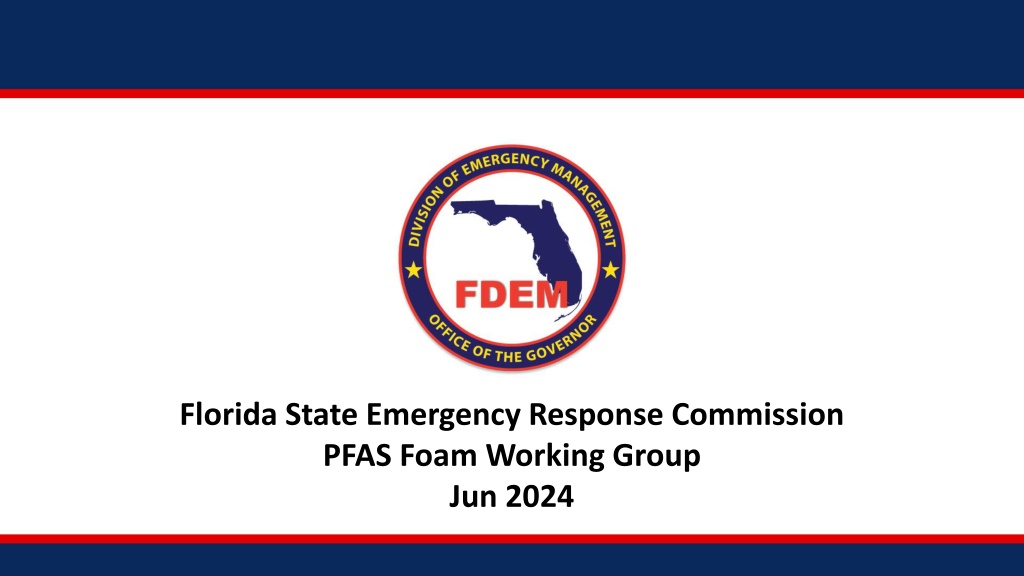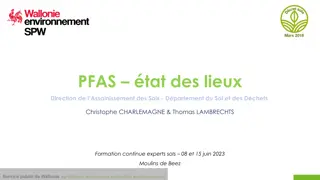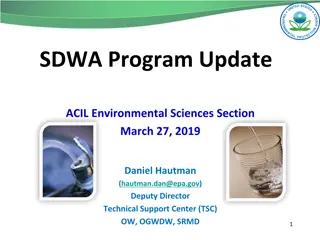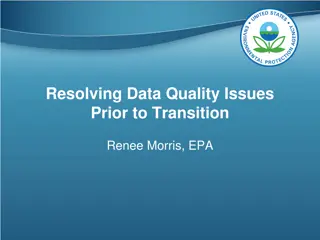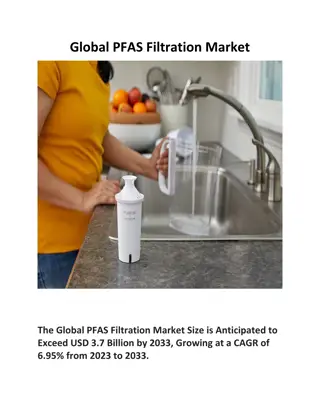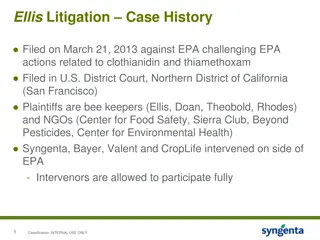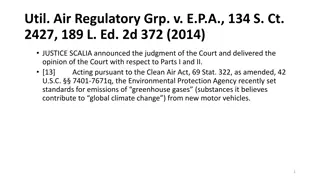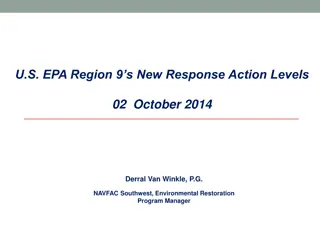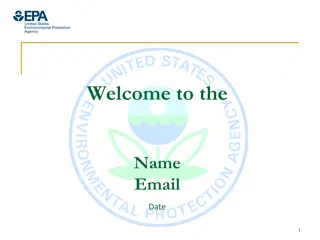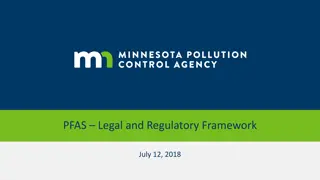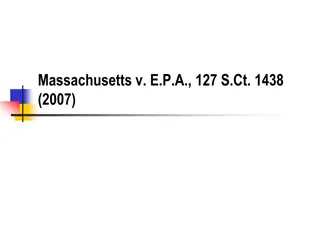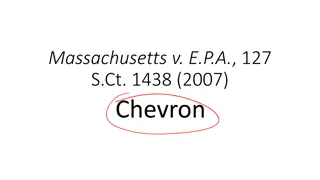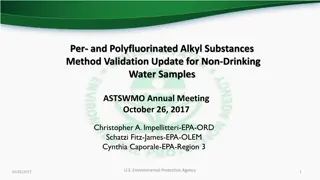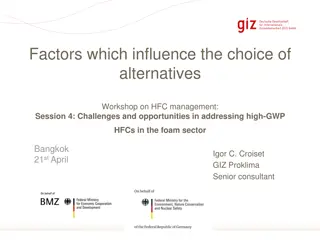Understanding PFAS Foam and EPA Regulations for Firefighting Applications
PFAS, components of firefighting foam, pose environmental and health risks due to their persistence. EPA regulations in April 2024 designated PFOA and PFOS as hazardous substances, enforcing controls on PFAS release. Thermal treatment offers a solution for PFAS disposal.
Download Presentation

Please find below an Image/Link to download the presentation.
The content on the website is provided AS IS for your information and personal use only. It may not be sold, licensed, or shared on other websites without obtaining consent from the author. Download presentation by click this link. If you encounter any issues during the download, it is possible that the publisher has removed the file from their server.
E N D
Presentation Transcript
Florida State Emergency Response Commission PFAS Foam Working Group Jun 2024
State Emergency Response Commission PFAS Firefighting Foam Overview Per- and Polyfluoroalkyl substances (PFAS & PFOA) are widely used, long lasting chemicals, components of which break down very slowly over time. Because of their widespread use and their persistence in the environment, many PFAS are found in the blood of people and animals all over the world and are present at low levels in a variety of food products and in the environment. PFAS are found in water, air, fish, and soil at locations across the nation and the globe. Scientific studies have shown that exposure to some PFAS in the environment may be linked to harmful health effects in humans and animals. There are thousands of PFAS chemicals, and they are found in many different consumer, commercial, and industrial products. This makes it challenging to study and assess the potential human health and environmental risks.
State Emergency Response Commission PFAS Firefighting Foam Overview Aqueous film-forming foam (AFFF) is a highly effective firefighting product intended for fighting high-hazard flammable liquidfires. This foam has chemicals that create the film in aqueous film- forming foam. They put fires out by cutting off the oxygen between the flammable liquid and air, which is what keeps fires burning once ignited. PFAS are used because of their ability to: Resist heat. Easily dissolve in water. Spread quickly so they put out fires faster. AFFF runoff from fire suppression potentially contaminates the soil, ground water and environment
On April 10, 2024, EPA announced the final National Primary Drinking Water Regulation (NPDWR) for six PFAS State Emergency Response Commission PFAS Firefighting Foam EPA New Ruling In April 2024, EPA finalized a critical rule to designate two widely used PFAS PFOA and PFOS as hazardous substances under the Comprehensive Environmental Response, Compensation, and Liability Act, also known as Superfund In addition to the final rule, EPA issued a separate CERCLA enforcement discretion policy that makes clear that EPA will focus enforcement on parties who significantly contributed to the release of PFAS chemicals into the environment.
On April 10, 2024, EPA announced the final National Primary Drinking Water Regulation (NPDWR) for six PFAS State Emergency Response Commission PFAS Firefighting Foam Disposal Thermal treatment Permitted hazardous waste combustors that operate under certain conditions: New research since 2020 indicates that thermal treatment units operating under certain conditions are more effective at destroying PFAS and minimizing releases or exposures (Section 3). Certain hazardous waste combustors and certain granular activated carbon (GAC) reactivation units may operate under these conditions, but uncertainties remain. For example, more information is needed to determine whether harmful products of incomplete combustion or PFAS air emissions are formed by units operating at lower temperatures (e.g., municipal waste combustors)
On April 10, 2024, EPA announced the final National Primary Drinking Water Regulation (NPDWR) for six PFAS State Emergency Response Commission PFAS Firefighting Foam Disposal The State Emergency Response Commission working with the State Fire Marshals office polled all Fire Departments for a total aggravate amount of PFAS foam in their departments. 63 Different agencies responded with a total of 49,600 gallons of PFAS foam on hand in a variety of different storage mechanisms. We estimate from the other non reporting that the State could have up to 120,000 gallons on hand SERC working with Cleanharbors to get a ballpark quote on disposal. $4.50 per pound to transport to Texas for incineration minimum of 120,000 gallons AFFF PFAS foam @ 9.4 pound/gallon X 120,000 gal= 1,128,000 lbs X $4.50= $5,075,000 cost for disposal
